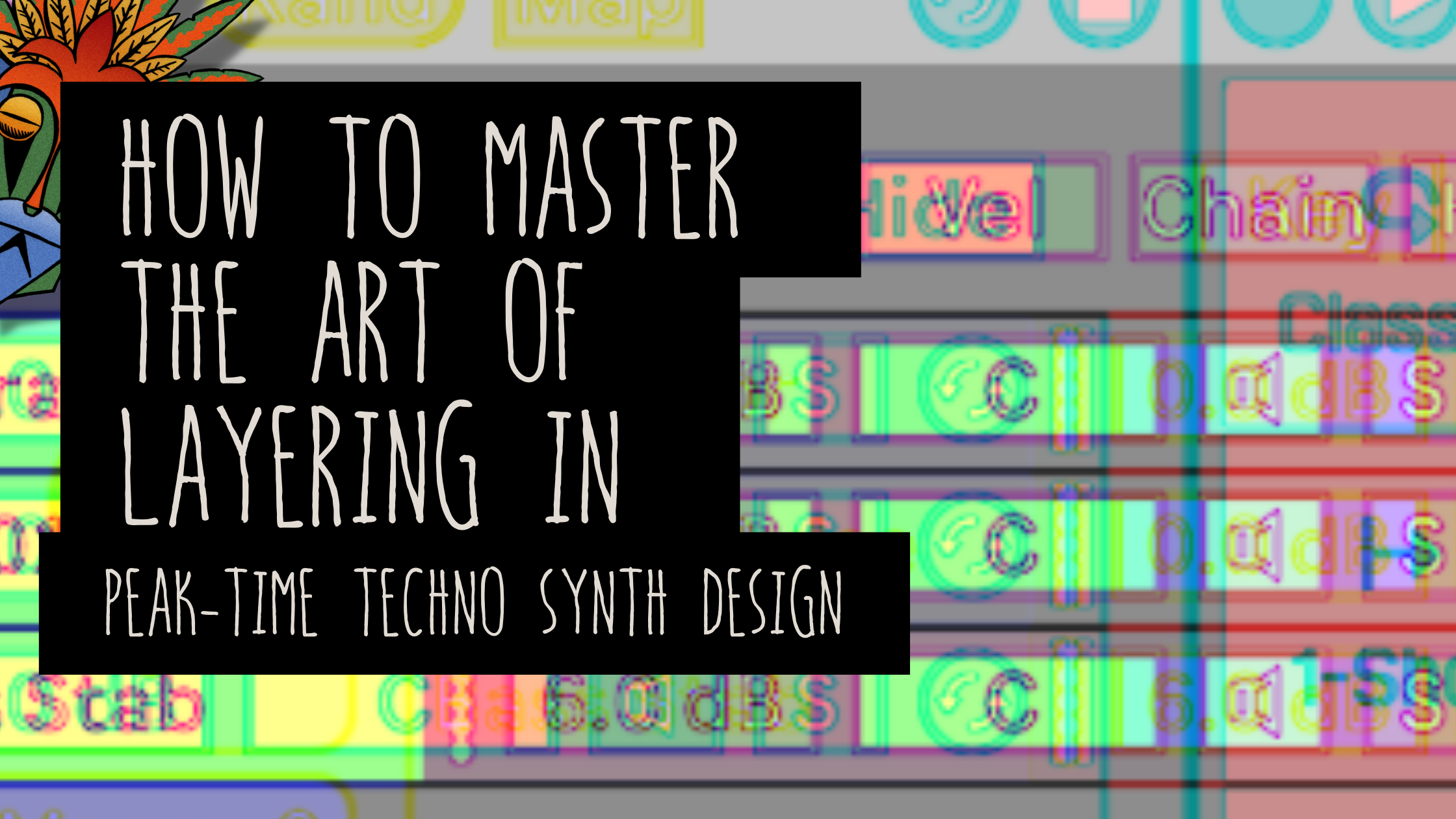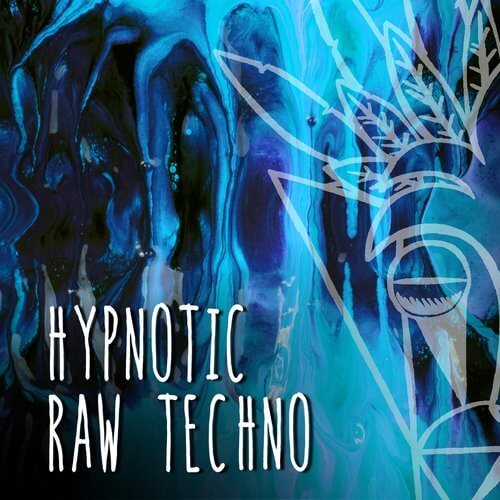How to Master the Art of Layering in Peak-Time Techno Synth Design
In the world of techno music production, one skill stands out as crucial for creating a rich, full sound that can fill a room and move a crowd: layering. Whether you're a seasoned producer or a beginner just starting out, understanding the art of layering in peak-time techno synth design can take your tracks to the next level. In this post, we'll explain why layering is important, provide a step-by-step guide on how to master it, and share some tips to help you get the most out of your synth layers.
What is Layering in Techno Synth Design, and Why Does it Matter?
Layering in techno synth design is a powerful technique that involves combining multiple synth sounds to create a more complex and textured sound. Think of it as building a sonic structure, where each layer is a different building block, contributing its unique character to the overall sound.
This technique is essential for several reasons. First, it allows you to create depth in your tracks. By layering sounds, you can fill out the frequency spectrum, ensuring that your track has a solid low end, a full-bodied mid-range, and crisp highs. This results in a more immersive listening experience, as the listener is enveloped in sound from all frequency ranges. The second, layering adds interest to your tracks. By using different synth sounds, you can create a rich tapestry of sound that keeps the listener engaged. Each layer can reveal new details and textures, making the track more engaging and dynamic.
Third, layering helps to create a fuller sound that can carry a track during peak-time sets. In a club setting, every element of the track needs to hold its own against the noise of the crowd and the sound system. Layering ensures that your synth sounds have the necessary weight and presence to cut through and make an impact.
In essence, layering in techno synth design is about more than just stacking sounds on top of each other. It's about carefully selecting and blending sounds to create a sonic landscape that is rich, engaging, and powerful. It's a skill that requires practice and a keen ear, but when done right, it can elevate your tracks to new heights.
Now that we've understood the significance of layering, let's delve into the practical steps to master this art
How to Master Layering in Techno Synth Design
Balancing Act: After you've curated your contrasting sounds, the next step is to harmonize their levels. This doesn't suggest that all sounds should be equally loud. Instead, reflect on the unique role each sound plays within the mix. For instance, your sub sine wave might be less dominant in the mix but still vital in providing that essential low-end presence, while the modern bass stab could be more pronounced to deliver that impactful punch. (We used Operator for the sub with just a pure sine wave, a sample from a sh101 on pulse and a bass stab sample from a pigments preset we create)
Equalization of Each Layer: The application of equalization is paramount when layering sounds. Each sound should inhabit its own distinct 'space' within the frequency spectrum to prevent any sonic clashes. For instance, you might consider reducing some of the low frequencies from the modern bass stab to accommodate the sub sine wave. Similarly, amplifying the mid-range frequencies of the SH-101-esque bass can accentuate its warm and distinctive character.
Panoramic View: Utilizing panning can enhance the overall breadth and immersive quality of your sound. However, be mindful when panning low-frequency elements like the sub sine wave, as they are typically centered to maintain a balanced mix. Conversely, higher frequency sounds such as the modern bass stab can be panned to introduce a sense of spaciousness and intrigue.
Effects Application: Incorporating effects such as reverb, delay, or chorus can infuse depth and interest into your layered sounds. For example, a hint of reverb on the SH-101-esque bass can aid in blending it seamlessly with the other layers. Additionally, a chorus effect on the modern bass stab can enrich it with a wider stereo image and a more lush tonality. However, exercise caution when applying effects to low-frequency sounds like the sub sine wave, as excessive use can muddy the mix.
Mix Evaluation: Lastly, it's crucial to critically listen to your layered sounds within the context of the complete mix. Each layer should harmoniously contribute to the overall sonic landscape without overpowering the others. Don't hesitate to make necessary adjustments as layering is an iterative process; what may work well in one track may not be as effective in another.
Tips and Reminders for Layering in Techno Synth Design
Less is often more: Too many layers can make your mix sound muddy or cluttered. It's better to have a few well-chosen, well-processed layers than a multitude of sounds that compete for attention.
Experiment with different sounds and effects: The best results often come from unexpected combinations. Don't be afraid to try out different synth sounds, effects, and processing techniques.
Always keep the overall context of your track in mind: Every layer should serve the song and contribute to its overall vibe. Before adding a layer, ask yourself how it enhances the track.
Use contrast to your advantage: Layering is all about creating a rich, full sound, and contrast is key to achieving this. Try pairing sounds with different timbres, frequencies, and stereo placements to create a more dynamic mix.
Don't forget about dynamics: While it's important to fill out the frequency spectrum, it's equally important to consider the dynamic range. Be mindful of how your layers interact dynamically - too many loud elements can lead to a flat, lifeless mix.
Tune your layers: Make sure all your layers are in tune with each other. Even if a sound is playing in the background, if it's out of tune, it can create dissonance and distract from the overall mix.
Consider the groove: In techno music, the groove is king. When layering, consider how each layer contributes to the groove of the track. Even melodic elements can contribute to the rhythm and drive of the track.
Expanding the Horizons: Beyond Bass Layering Techniques
While we've delved deep into the art of layering for peak-time techno bass synth design, it's essential to recognize that the principles of layering extend beyond just the primary elements of a track. By understanding how to layer various sounds effectively, you can craft intricate atmospheres, design unique transitional effects, and elevate the overall sonic experience of your production. In this section, we'll explore some advanced layering techniques, focusing on creating immersive pads and impactful transition effects.
Layering for Lush Pads
Pads are essential elements in techno music, providing the atmospheric backdrop against which other elements shine. Layering is the key to crafting pads that are both rich and evocative. Here's a simple guide:
Foundation Layer: Start with a basic waveform, like a saw or square wave. This will be the backbone of your pad, providing the primary tonal character.
Ambient Layer: Add a layer with a slow attack and release, perhaps from a granular synthesizer or a sample with a lot of reverb. This will give your pad its atmospheric quality.
Harmonic Layer: Introduce another synth sound that has a rich harmonic content, like a wavetable or FM synthesis. This will add complexity and depth to the pad.
Texture Layer: Consider adding a field recording or noise layer at a low volume. This can introduce an organic feel to the pad, making it more unique and textured.
Remember, the key is to blend these layers seamlessly, ensuring that no single layer dominates the mix. Use EQ to carve out space for each layer, and consider adding a unifying reverb or chorus effect to gel the layers together.
Creating Impactful Transition Effects
Transitions are pivotal moments in a track, and layering can help you craft impactful effects that signal these changes:
Low-End Boom: Start with a deep kick or tom sample, pitched down for added weight. This provides a solid foundation.
Mid-Range Punch: Layer in a snare or clap with a lot of reverb. This adds a percussive element to the transition.
High-End Sizzle: Add a reversed cymbal or hi-hat, leading into the transition. This introduces anticipation.
Atmospheric Tail: Consider adding a long reverb or delay tail to the effect, which can help in smoothly leading into the next section of the track.
When layering for transition effects, it's crucial to ensure that the effect doesn't overpower the main elements of the track. Use volume automation to control the intensity and consider side-chaining the effect to the main kick or bassline to ensure clarity.
Closing
Mastering the art of layering in peak-time techno synth design is a journey, not a destination. It's a process that requires patience, experimentation, and a keen ear. But the rewards are well worth the effort. By carefully selecting, balancing, and processing your layers, you can create a rich, full sound that stands out in a mix and truly moves your audience.
Layering is more than just a technical skill—it's a form of artistic expression. It allows you to infuse your tracks with depth, complexity, and personality. Each layer you add is like a brushstroke on a canvas, contributing to the overall sonic picture.
Remember, great layering is about harmony and balance. It's about understanding how different sounds interact and complement each other to create something greater than the sum of its parts. It's about knowing when to add a layer and when to hold back, when to push the boundaries and when to keep things simple.
So, don't be afraid to experiment and push your boundaries. Use layering as a tool to explore new sonic landscapes and express your unique musical vision. And most importantly, have fun with it. After all, making music is about expressing yourself and enjoying the process.
As you continue on your journey in music production, remember that Mind Flux is here to support you. We're committed to providing you with high-quality samples, resources, and insights to help you create the best music you can. So keep exploring, keep learning, and keep pushing the boundaries of what's possible with your music.
Discover More with Our Techno Sample Packs
Ready to take your techno synth design skills to the next level? Check out our range of high-quality techno sample packs, designed to inspire and empower music producers of all levels. Explore our collection today and start creating music that pushes boundaries and defines genres.






































